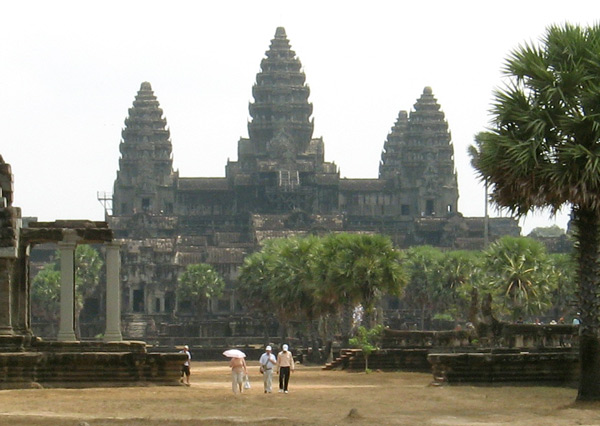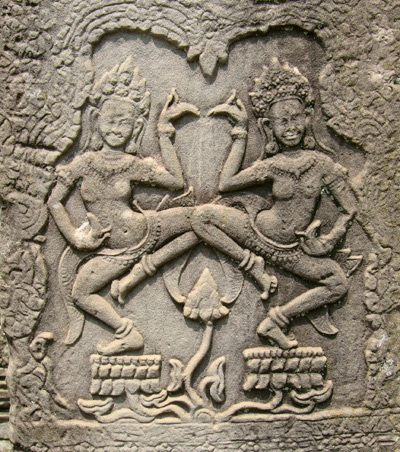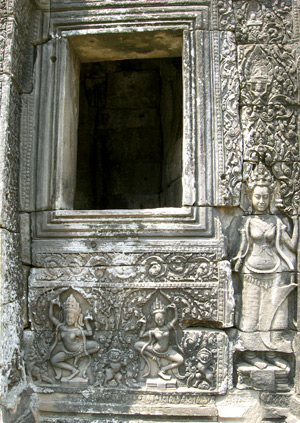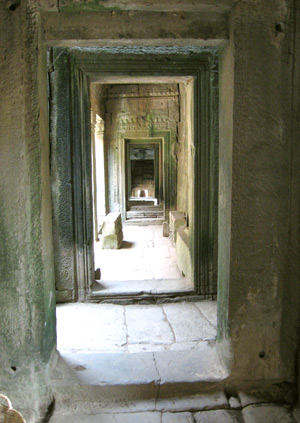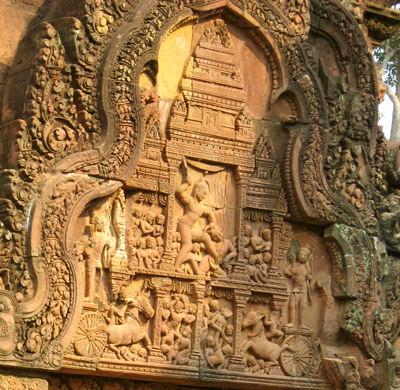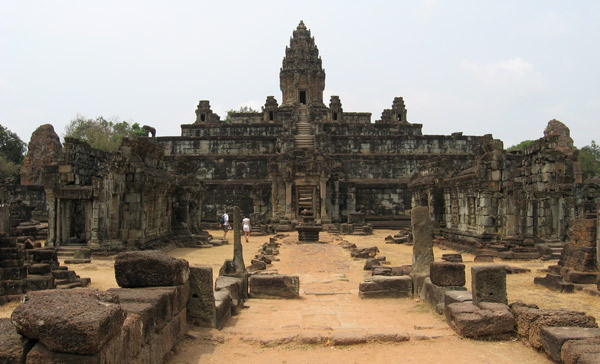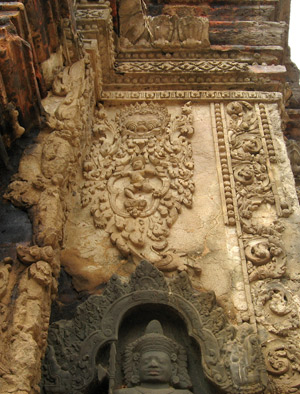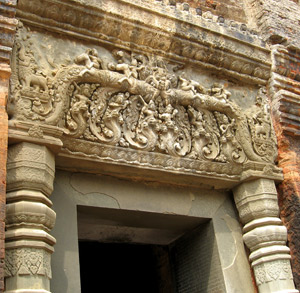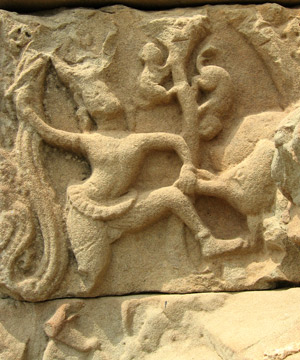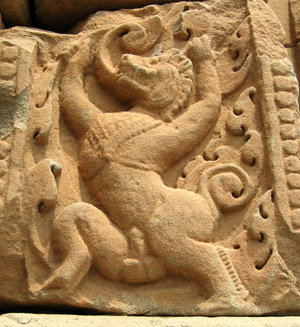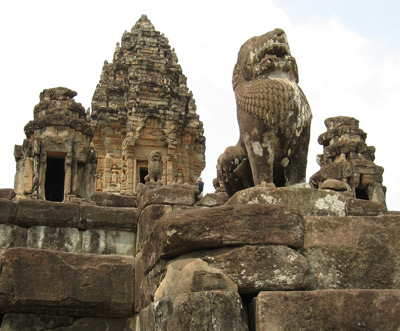|
Twenty-third Day
Arrived yesterday at the final stop of my journey. Now I left the
Mekong River behind, and settled in Siam Reap in western Cambodia,
not that far from the Thai border. I guess this is the most
important "must do" if you ever visit the country. The small town is
the base for everyone doing excursions to the well known mythical
ruins of Angkor Wat. Sorry to say the whole town is now turned into
a tourist camp, spanning from the low-end to the very high-end
tourism. |
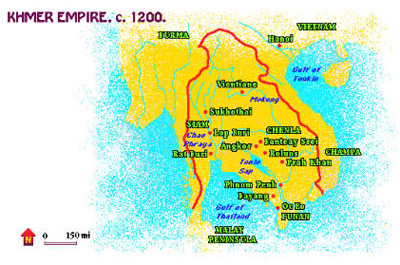 |
Khmer History
Angkor is the old palace in the jungle keeping the
heritage of the prosperous Khmer civilization alive.
From here the entire empire was run. During this
time the empire included today's Cambodia, Laos and
Thailand.Structures from 9th-13th Century
Angkor is
actually not just the ruins of Angkor Wat, its holds several sites from different
dynasties, scattered over a vast jungle area. Palaces, temples and
even ancient towns dated back from 9th into 13th
century. |
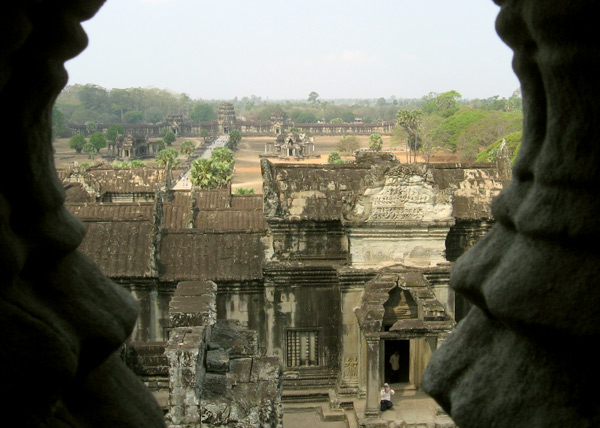 |
|
Angkor Wat
The pictures above is both from Angkor Wat. It's probably the first
site you visit as it is closest to Siam Reap. It's possible to reach
by bike, but due to the heat I would recommend to hire a motorbike
driver. Of course at a rate of 10-30 dollars a day.
Angkor Wat was built in early 12th century and it is
believed to be the the largest religious structure in the world.
Within the outer walls is an area of 1square kilometer surrounded by
a moat. The architecture is simply stunning. |
Aspara, a Heavenly Nymph
After spending some day in the area you got most surprised and
impressed by the amount and skills of the stone carvings. On the
temple walls is said to be 3000 images of Aspara - a heavenly nymph,
I didn't count though.
Still
after almost eight centuries they are
beautiful. Though time has paid its tribute many carvings was
actually damaged during the 80s by efforts by Indians to clean them
up with chemicals. Now there is a German project going on, trying to
restore the carvings.
Cultural Mix
Although Khmer culture at that time was suppose to be Buddhist,
Angkor Wat holds images of Vishnu, Krishna and Shiva. This
Buddhist-Hindi relation seems to me to be quite complex. |
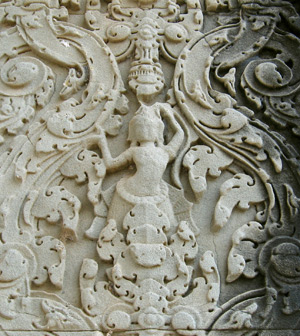 |
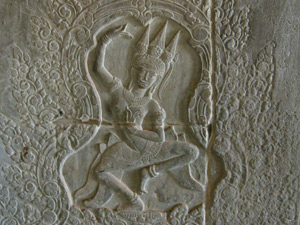 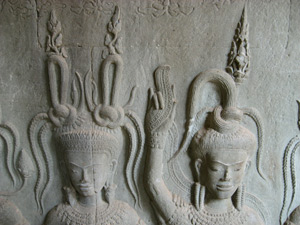 |
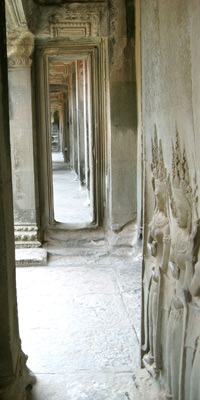 |
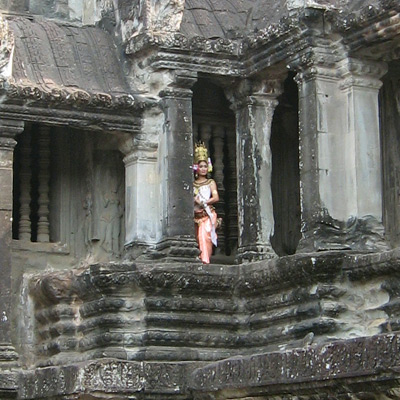 |
|
Colons and corridors and, look... A real living Khmer princes! Still
hanging around after all those years. Beautiful as ever. |
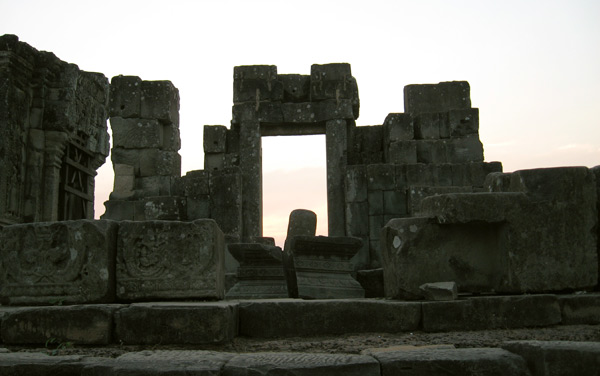 |
|
Phnom Bakheng
Ruins in front of Angkor Wat famous for watching the sun go down
over Angkor Wat. |
Skapad av
Hans-Peter Nilsson
söndag, mars 04 2007 15:51
Epilog
Dags att forbereda for hemresa, Bangkok
imorgon. Lite oklart hur jag kommer dit
an.
Tillbringat
sista tre dagarna i Siam Reap som ar
utgangspunkten for att besoka Ankor Wat,
de stora mystiska khmeriska djungel
templen. Skrev sist att omradet
harstammar fran 1200-talet, men jag hade
inte last pa ordentligt. Omradet bestar
egentligen av flera skilda tempelomraden,
egentligen hela stader, dar de aldsta
harstammar fran 800-talet. Mest kant ar
ju dock Ankor Wat som ocksa ar det
storsta byggnadskomplexet och under
toppen, kring 1200-talet av epoken bodde
har ca en miljon manniskor. Tidsmassigt
ar det ju inte sa imponerade jamfort med
grekerna eller rommarna (och annu mindre
med Kineserna) snarare kanske samtida
och likartat med Maya. Men anda...
Efter tre dagar
krypande och stapplande bland kullvalta
statyer och sandstensblock ar jag bade
solbrand och utmattad. Manga fantastiska
vyer, byggverk och stensniderier. Bland
det mer spektakulara ar djungeltemplet
som blivit overvaxt och genomvaxt av
flerhundraariga liantrad. Har mots ocksa
gammal hinduism med buddism som rotades
bland khmererna under denna tid.
Siam Reap, ja
hela området är horribelt. Det har vuxit
fram en total turistkultur har. Tiggare,
barn som saljer bocker och vykort pa
gatan, hundratals tuk-tuk chaufforer och
vattenforsaljorskor som tror att ju mer
dom skriker ju mer saljer dom. Allting
kostar dubbelt sa mycket som det borde,
minst. Varfor inte konkurera om priserna
istallet sa hade det blivit lite sund
buissines. En dag med en
motorcyckelchauffor kostar mellan 10-20
dollar, vilket ar en halv manadslon i
det har landet.
|
Angkor Thom
|
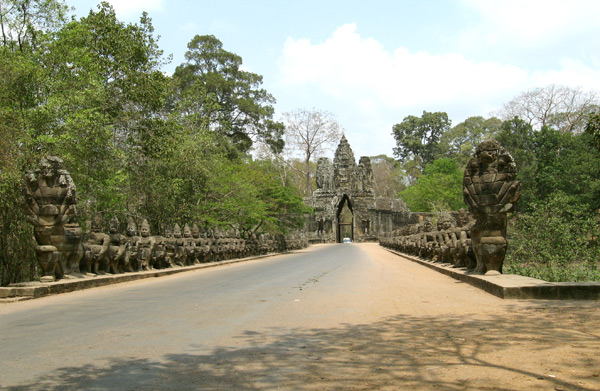 |
City of Angkor Thom
Succeeding Angkor Wat, Angkor Thom was built in late 12s century.
It's a complete city structure covering 10 square kilometers. The
city wall, 12 kilometers long, was surrounded by a 100 meter broad
moat that is believed to had housed frightening crocodiles. The
impressive causeway approaching the city gate is guarded by 56 Gods
on the left side and 56 demons on the right. |
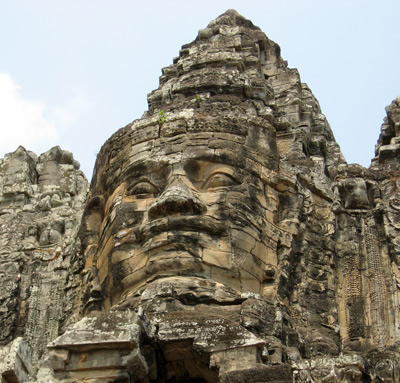 |
| The Angkor Thom city gate, 20 meter high, is covered with the
face of Bodhisattva Avalokiteshvara in various position. the city is
supposed a population of 1 million people. |
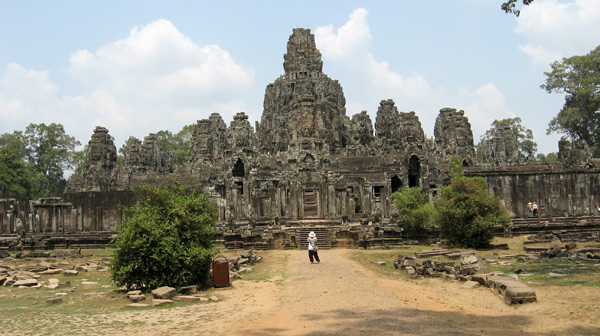 |
Bayon Temple
In center of the Angkor Thom City lays the Bayon Temple. Maybe not
as spectacular as the Angkor Wat but still an impressive
construction. All over the temple are 216 heads of the Bodhisattva
Avalokiteshvara facing all directions, maybe imposing that the God
is always present. |
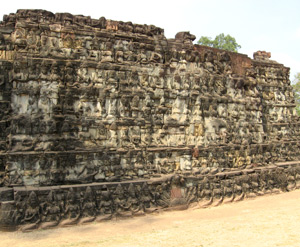 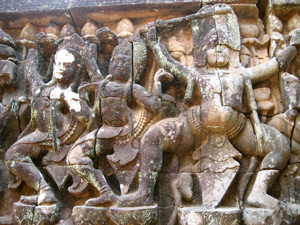 |
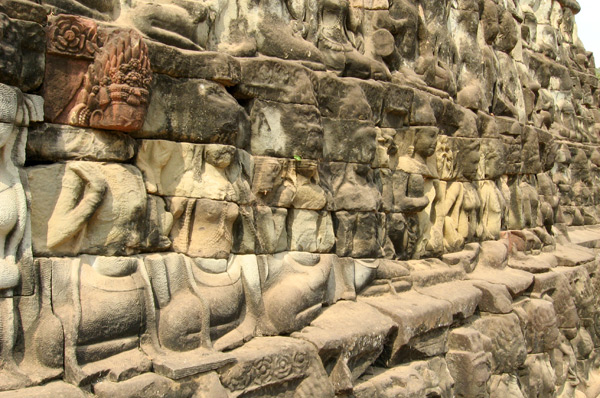 |
Terrace of Elephants
Within the city walls are also older as wall as later
structures. |
| forts.
Apropå dollar, så är US currency lika
gångbart som den inhemska valutan här - inte bara på
turiststråken utan precis var som helst i landet. Ytterligare
ett tecken på att ekonomin är lite skev.
Om man som turist cyklar för egen kraft,
tycker dom att man är en dum turist, eftersom dom behöver jobben
som chaufforer. Jag forsokte förklara att jag reser ju inte hit
for att skänka dom pengar utan for just för att vara turist och
betalar for den service och upplevelse jag behöver och får. Men
det forstar dom inte alls. Att tjäna pengar på att göra så lite
som möjligt är vanligen kärnan i den khmeriska filosofin.
Visserligen är landet synnerligen hårt drabbat av krig och
elände, men situationen är ganska likartad i Laos och där möts
man av en helt annan attityd.
Japaner ja, det maste befinna sig
tusentals japanska turister här som översvallar alla ruiner,
gärna tva, tre busslaster åt gången, ivrigt fotograferande sig
sjalv görande V-tecknet vid alla monument och stenblock. De är
också ganska hänsynslösa och drar fram som flockdjur. Jag har
väl inget rätt att klaga på det naturligtvis men det gör det ju
omöjligt att fotografera och visst är det lite enerverande i
längden.
Satt just och drack en kopp kaffe och
filosoferade över kaffekulturen i sydostasien. Te odlas ju
flitigt i hela asien och borde vara en hälsosam del av kulturen
här. I Kina blir man alltid serverad te innan man skall äta
eller dricka något, inte till kaffet förståss för det serveras
inte i Kina. I Burma står det alltid en kanna te på bordet,
oavsett om man äter middag eller dricker en kopp kaffe, och
oavsett vilken tid på dygnet det är eller hur billigt sjapp man
sitter på.
I Laos blir man ofta serverad ett glas
vatten till kaffet, enstaka gånger te, och oftast serveras det
lokalt kaffe med konserverad och sötad grädde. Det går också bra
att beställa lokalt eller kinesiskt te där.
Här i Kambodja serveras inte te på
kinesiskt vis överhuvudtaget och kaffet är oftast i västerlänsk
stil med tillhörande pulvergrädde. Och om man beställer te
kommer det troligen en kopp med en Liptons tepåse.
Jo, mot Bangkok imorgon alltså, så var
denna resan till ända. Känns som en mycket intensiv resa. Tiden
har flygit fram, samtidigt känns det väldig avlägset den dag då
jag äntrade Mekongfloden långt uppe i bergen.
|
Ta Phrom
|
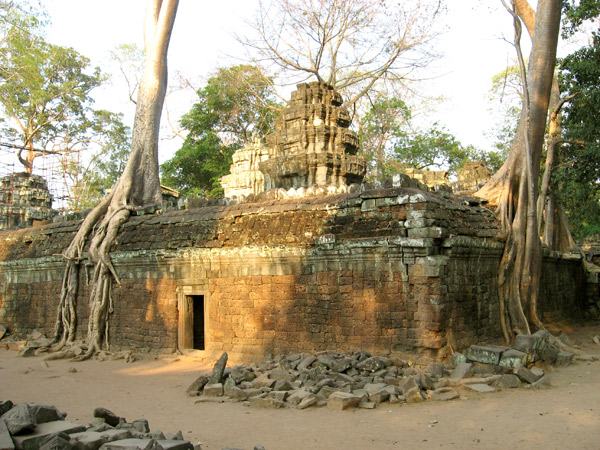 |
The Ta Phrom Temple
The most spectacular site is probably the temple that was
invaded by the jungle, Ta Prom. It's also one of the latest
"discovered" places.
It's a Buddhis Temple located just east from Angkor Thom and
also from the same dynasty, late 12th century that is.
|
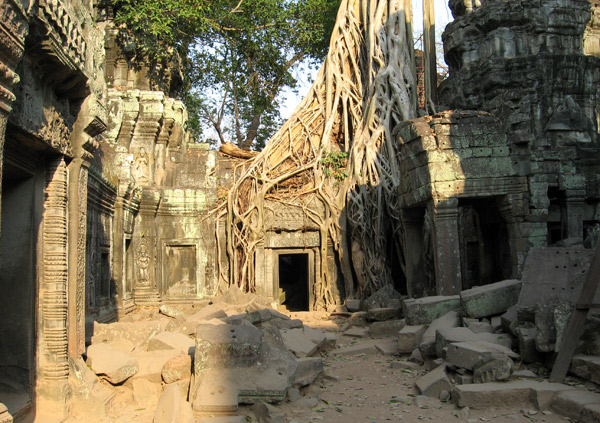 |
Nature vs. Humans
Although the temple yard is cleansed from many jungle trees, no
really reconstruction has took place, leaving the ruins very
much as it once was found.
The site could represent some philosophic thoughts
about human culture over win the nature just to find the nature
taking it all back.
I tried to do some research on what kind on tree this was but
I never succeeded, although I got a name. If anyone knows,
please let me know. [Okay, I found out. -It's simply the
Banyan tree] |
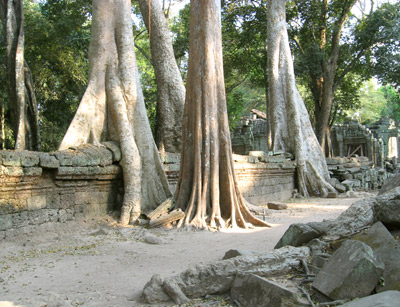 |
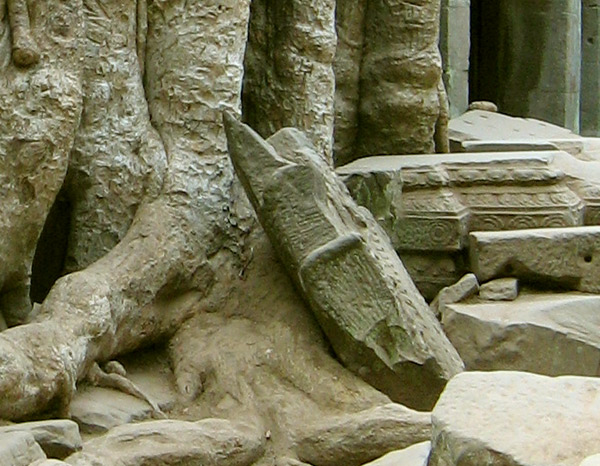 |
Banteay Srei
|
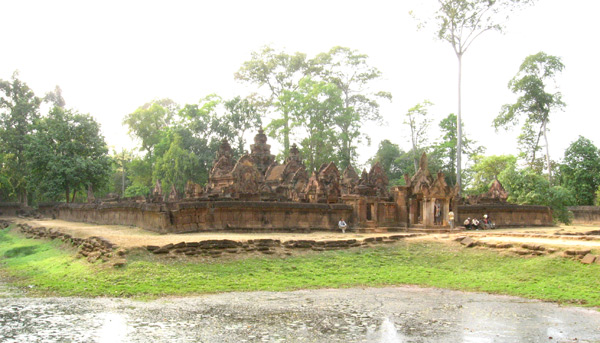 |
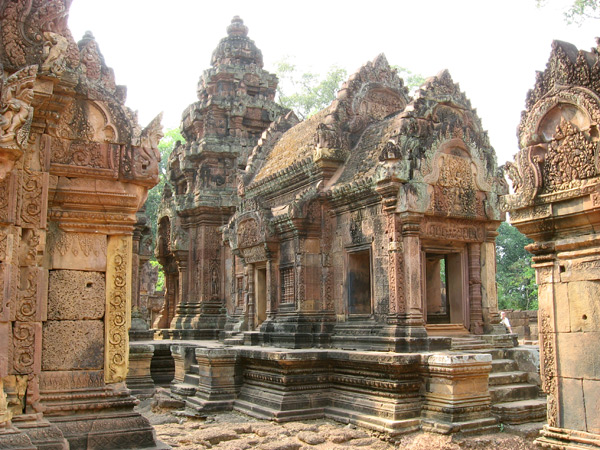 |
A Womans Citadel
Banteay Srei is one of the smaller sites but one of the most
impressive. The name means 'Citadel of the Woman' because
it has so beautiful carving that it could not be made of a man.
It's a Hindu Temple dedicated to Shiva dating back to the 10th
century.
At the right side is a carving of the Garuda, a half
bird-half human God. |
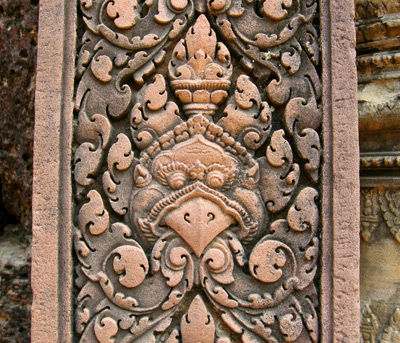 |
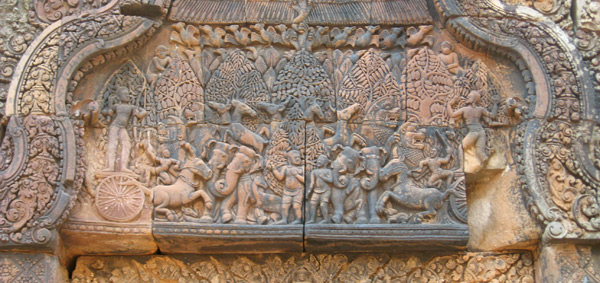 |
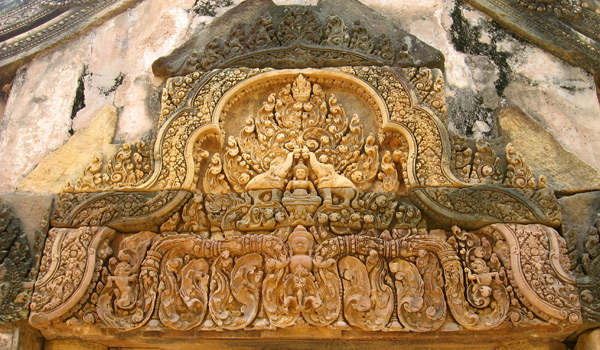 |
The Naga
This carvings over a portal at Banteay Srei shows the Naga,
a seven headed serpent protecting the entrance.
Unfortunately it has lost most heads but at least it's
possible to see the structure. |
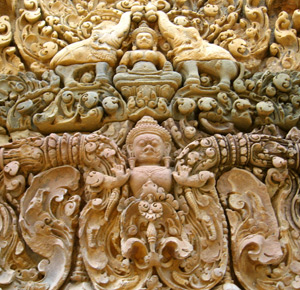 |
|

